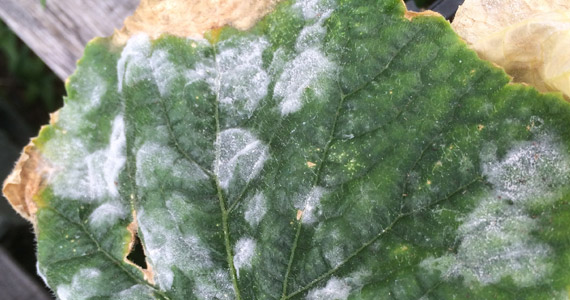Mildew - Pests and Diseases

Briefly about the plague
- What is Mildew?
- The term mildew refers to a group of phytopathogenic fungi that cause diseases in plants and exhibit similar symptoms. We distinguish between “true” and “downy” mildew.
- What is there to see?
- Generally, mildew is found on the top leaf, but there are exceptions. The leaf looks as if it has been dusted with powder.
- What can be done about it?
- Keep the humidity low and keep the growing area clean.
About powdery mildew
Powdery mildew is also known as powdery mildew. Before symptoms become apparent, the leaf begins to develop blister-like spots. This is followed by the characteristic white powder where the stain used to be. The leaf looks as if it has been dusted with powder. In general, powdery mildew occurs on the top of the leaf, but there are exceptions. One type of fungus only grows on the underside of the leaf, so it's no surprise that this type is often overlooked. However, as the disease progresses, the leaves can become completely covered with this white coating and it can even sit on buds. This negatively affects the size and quality of the crop.

How to avoid the plague?
The best treatment for these types of fungi is prevention; once they are present and developed they are very difficult to eradicate, sometimes even chemical fungicides struggle to do so. Try to prevent spores from coming from elsewhere and contaminating your plants by keeping the area where the plants are growing clean. You can do this by using only clean equipment and washing your hands thoroughly beforehand. In addition can CANNACURE sprayed on the plant to prevent mildew.


